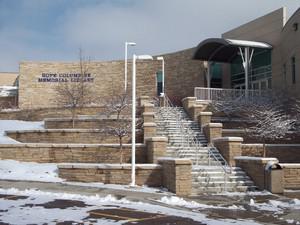School safetyHow Columbine became a blueprint for school shooters
When twelve students and one teacher were killed in Littleton, Colorado twenty years ago, it not only became what at the time was the worst high school shooting in U.S. history. It also marked when American society was first handed a script for a new form of violence in schools. Since the 1999 tragedy at Columbine High School, we identified six mass shootings and forty active shooter incidents at elementary, middle or high schools in the United States. In twenty – or nearly half – of those forty-six school shootings, the perpetrator purposely used Columbine as a model.

HOPE Columbine Memorial Library // Source: commons.wikimedia.org
When twelve students and one teacher were killed in Littleton, Colorado twenty years ago, it not only became what at the time was the worst high school shooting in U.S. history. It also marked when American society was first handed a script for a new form of violence in schools.
We make that observation as researchers – a psychologist and a sociologist – who have been studying mass public shootings as part of a grant from the U.S. Department of Justice.
Since the 1999 tragedy at Columbine High School, we identified six mass shootings and forty active shooter incidents at elementary, middle or high schools in the United States. Mass shootings are defined by the FBI as an event in which four or more victims died by gunfire.
In twenty – or nearly half – of those forty-six school shootings, the perpetrator purposely used Columbine as a model.
Columbine’s influence continues until this day. On April 17 – just three days ahead of the 20th anniversary of the Columbine shooting – authorities closed schools across Colorado due to a credible threat of a woman armed with a shotgun and who was “infatuated with Columbine.” The 18-year-old Florida woman was reportedly found dead in Colorado later in the day from an apparent self-inflicted gunshot wound.
The ties that bind to Columbine
In our study of school shootings, we only looked at cases where a gun was fired on campus, following the practice of The Washington Post’s database on school shootings. Had we included foiled plots, the number would be significantly higher.
